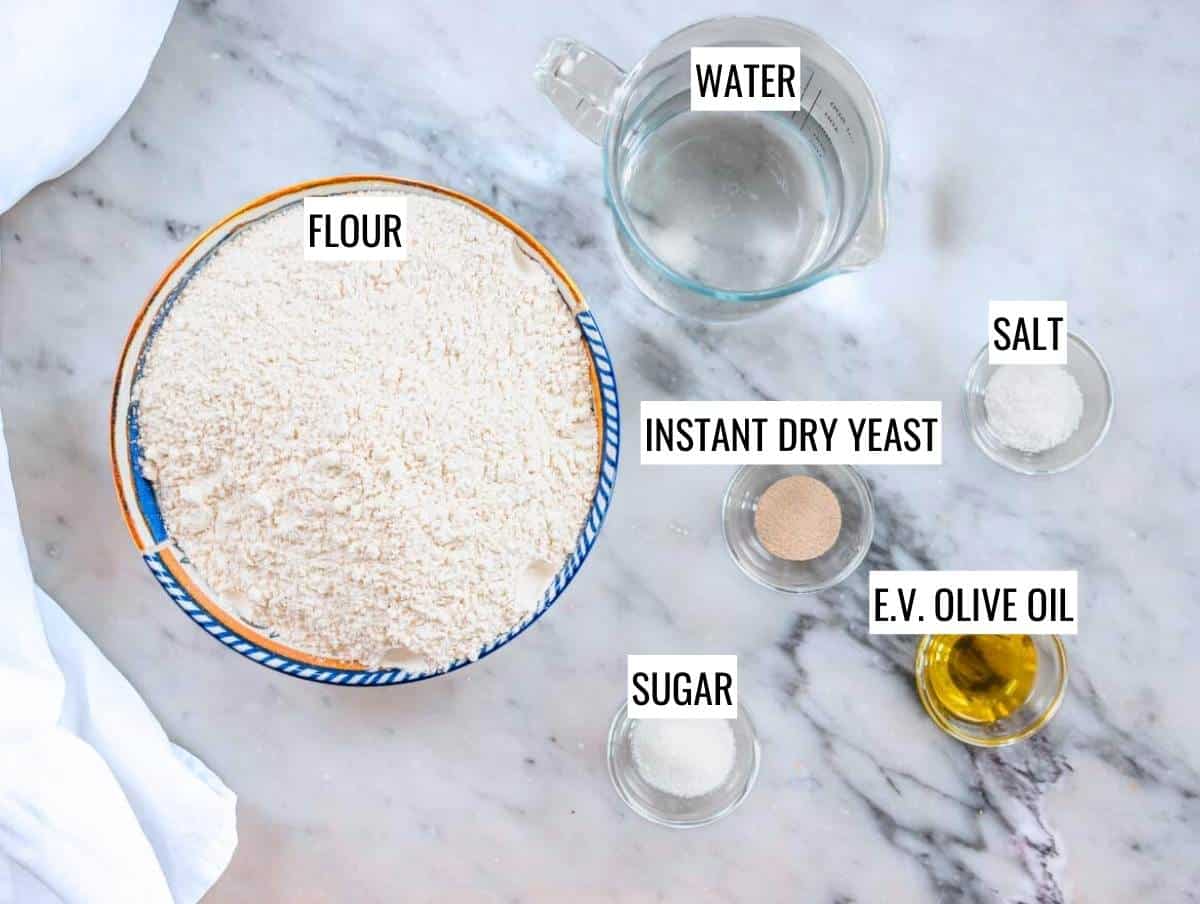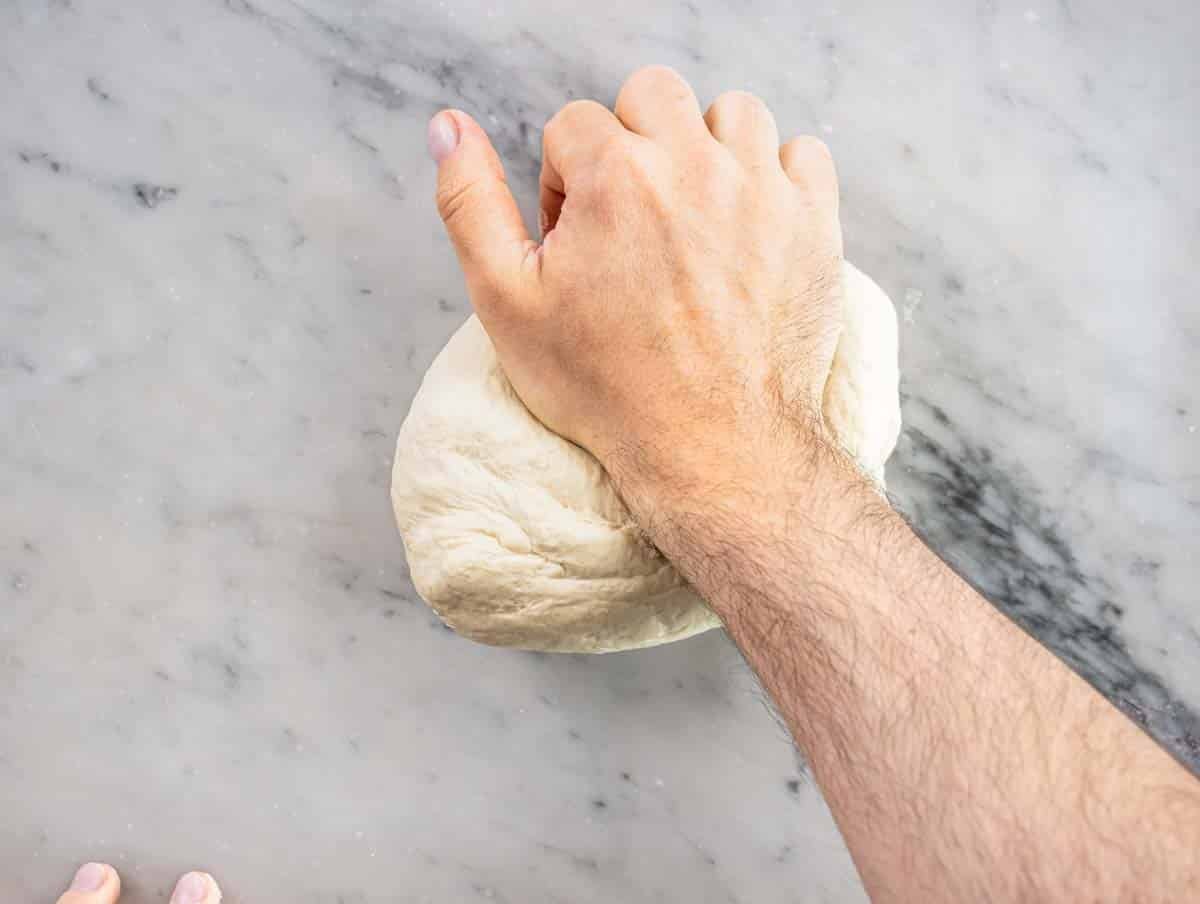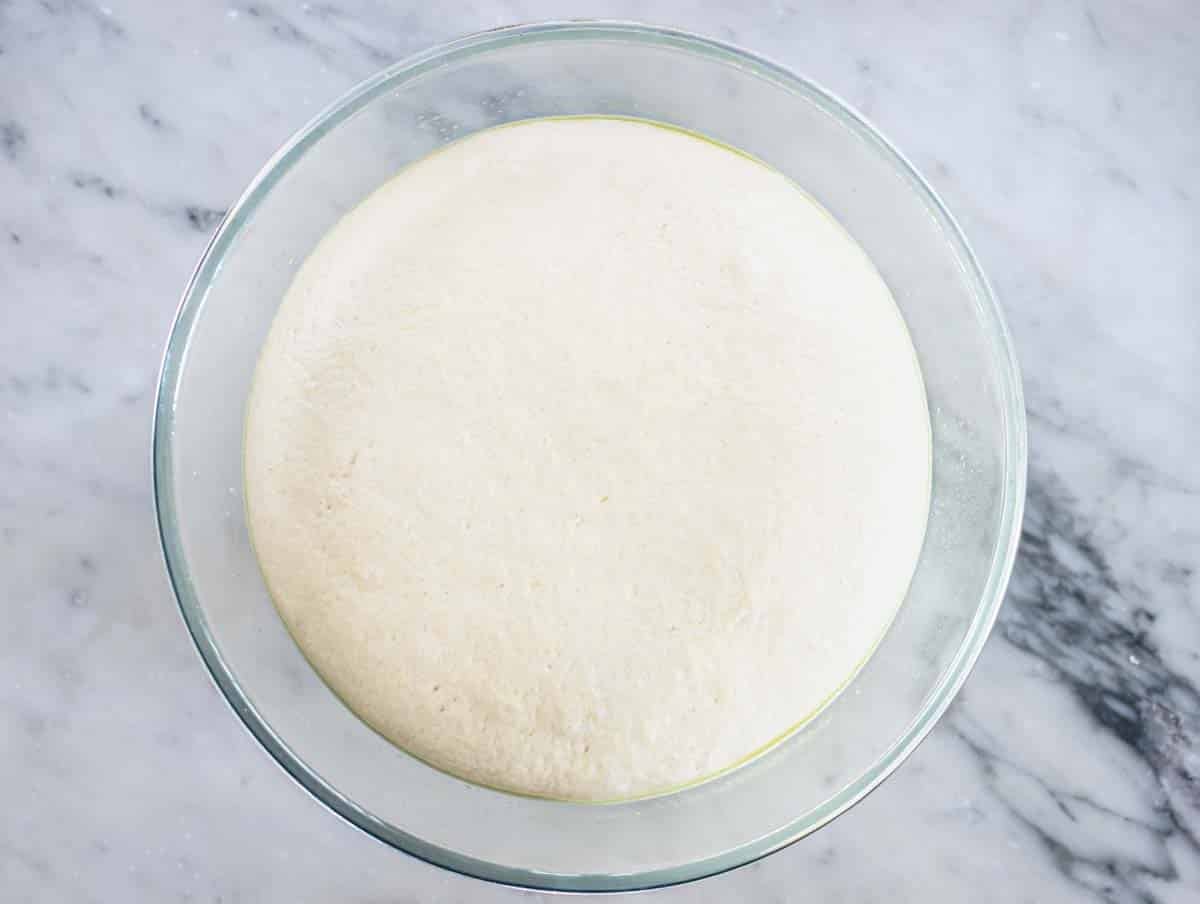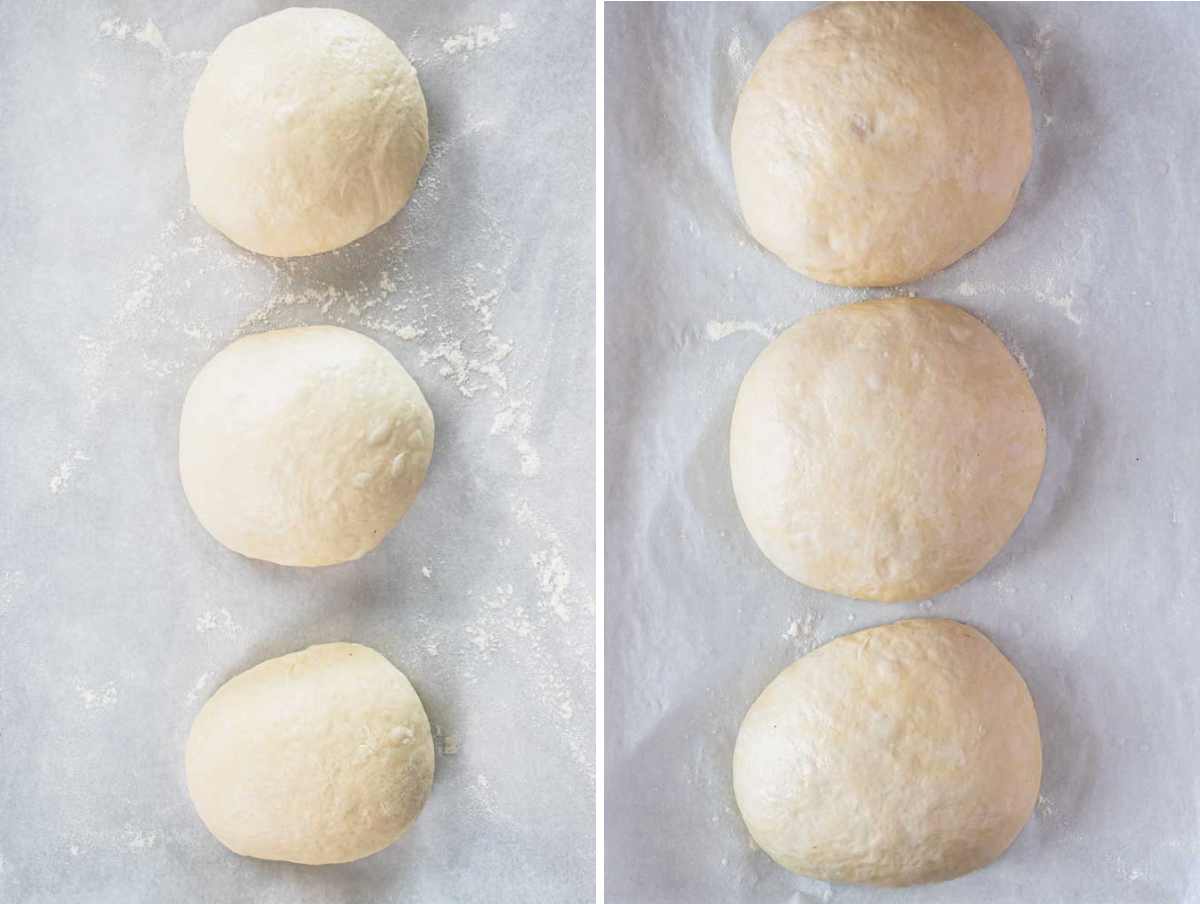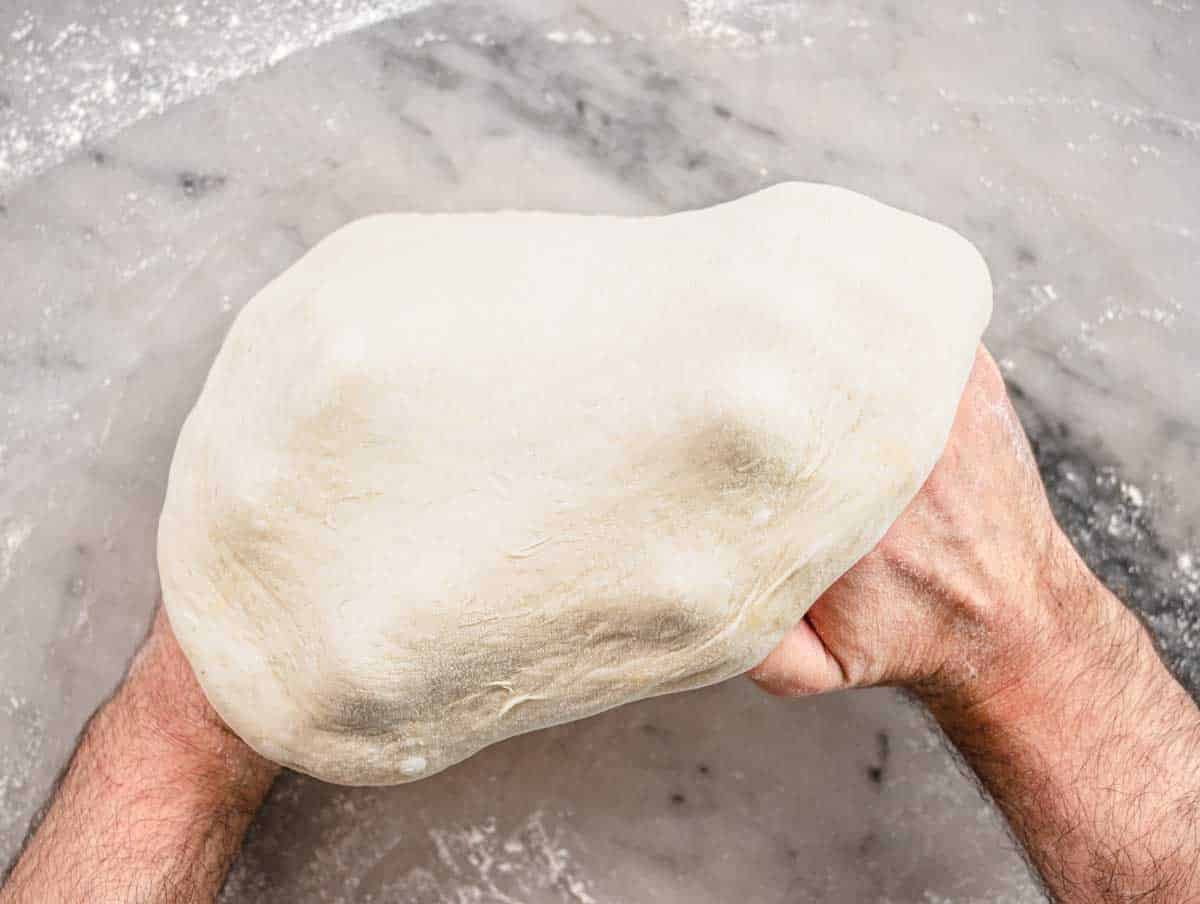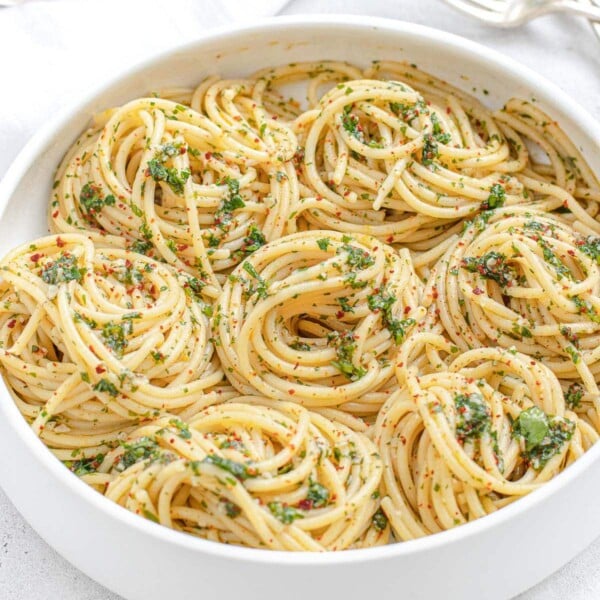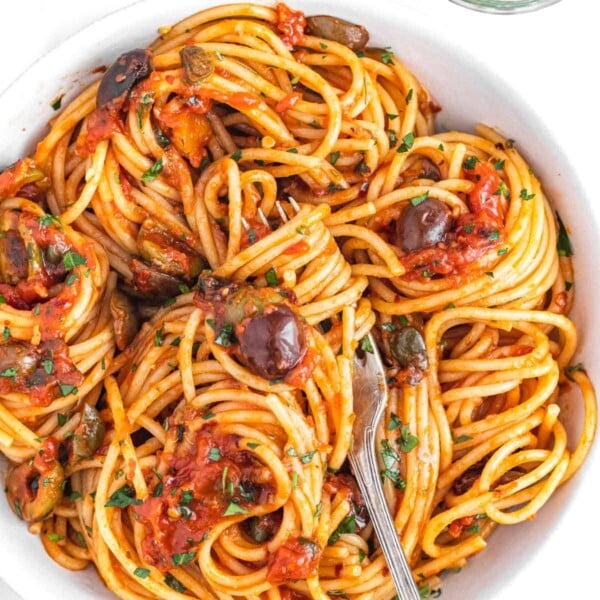If you are baking it in a home oven, you should add olive oil and sugar. In this blog post, we’ll show you how to make Neapolitan pizza dough and cook it in a home oven or pizza oven.
What is Neapolitan pizza?
Ingredients and substitutions for Neapolitan pizza dough
How to make Neapolitan pizza dough
4. Shaping the pizza
More breads and pizzas
More Italian recipes
It is often topped with tomato sauce, mozzarella, olive oil, and basil. What makes Neapolitan pizza dough different is its soft and thin crust and puffy, slightly charred, and airy rim, called “cornicione” in Italian. Also, the hydration level (or water-to-flour ratio) of traditional Neapolitan pizza or “Pizza Napoletana Verace” is around 60% to 65%. The yeast amounts to only a few grams. For an easier and more versatile pizza recipe, check out our pizza dough recipe. If you are using an Ooni oven, check out our Ooni pizza dough recipe. This style of pizza is called Contemporary Neapolitan Pizza, and it won’t be the focus of this blog post. Neapolitan pizza dough is cooked in wood ovens at temperatures above 750°C or 400°C in just 90 seconds. This high temperature and quick cooking time develop a unique texture and flavor. If you have a pizza oven, like an Ooni pizza oven, you can make a Neapolitan pizza as good as one made in the best pizzerias. If you use a standard home oven with a lower temperature of around 480°F or 250°C, we recommend adding olive oil and sugar to the dough to help the pizza cook evenly and thoroughly.
Flour
The best flour for Neapolitan pizza dough is pizza flour because it has more protein than regular all-purpose flour and a higher W value of around 260-280 W. These characteristics allow it to absorb more water and develop the stretchability necessary for making the best Neapolitan pizza. The best pizza flours are Caputo Pizzeria, Caputo Nuvola, and Caputo 00, all made in Naples by the historical Antimo Caputo Flour Mill and used by the best Neapolitan pizza makers. A good alternative is King Arthur 00 Pizza flour. Petra flour and Molino Marino are also excellent, although more difficult to find. You should be able to find pizza flour in most supermarkets. If you can’t find pizza flour, substitute it with bread flour.
Water
Plain tap water is ok.
Yeast
We recommend active dry yeast or instant dry yeast as they are easier to store and are more reliable than fresh yeast. We can recommend Caputo dry yeast, Red Start active dry yeast, Red Star saf instant, and Dr. Oetker instant yeast. Substitute fresh yeast for dry yeast. You’ll need three times the dry yeast amount.
Salt
Fine sea salt or kosher salt.
Sugar and Olive oil
Only add sugar and olive oil if you cook the pizza in a standard home oven. If you plan to cook this Neapolitan pizza dough in a pizza oven that reaches high temperatures (750°F or 400°C), you won’t need to add sugar and oil.
1. Mixing the dough
Dissolve the yeast and sugar in lukewarm water. Set aside. Tip: If the yeast doesn’t dissolve, it’s probably dead. Start again with new yeast. If you cook this in a pizza oven at high temperatures, omit the sugar. In a large mixing bowl, mix flour and salt. Add the water-yeast mixture to the flour and stir with a wooden spoon for about a minute or until combined. Add the olive oil and stir for one more minute until the oil is absorbed. Tip: If you cook this in a pizza oven at high temperatures, omit the olive oil. Transfer the dough to a clean worktop and knead for 3 minutes, then put it in a mixing bowl brushed with oil and cover it with plastic wrap.
2. Bulk Proofing
SAME-DAY PROOFING: Set the bowl aside in a warm corner of your kitchen for 6 hours. The Neapolitan pizza dough should double in volume. OVERNIGHT PROOFING: Leave it at room temperature for 30 minutes, then put it in the fridge overnight or for 8 to 12 hours.
3. Second proofing
Transfer the dough onto your worktop and cut it into three equal pieces. Shape the pieces into balls, making sure they are well sealed. Transfer balls to a baking tray lined with parchment paper and dusted with flour. Cover with plastic wrap and set aside at room temperature.
1 hour if you did the quick proofing 4 – 6 hours if you did the overnight proofing
The dough balls should be doubled in size and very soft. The warmer the room, the faster the dough will proof. If you have a pizza oven, preheat it to 750°F or 400°C. Transfer the dough ball to a well-floured worktop, sprinkle it with flour, and flatten it with your fingertips, leaving about 3/4 inch or 2 cm of rim around the edges of the disc. Put the pizza disc over your knuckles and gently stretch it while rotating it. Transfer the pizza disc to a lightly floured peel and rock the peel back and forth, ensuring the pizza disc is not sticking. Top the pizza with tomato sauce, a few basil leaves, fresh mozzarella chunks, and a drizzle of olive oil. Adjust the pizza shape by pulling the rim and making it round. Slide the pizza in the center of the pizza stone and cook it for:
Home oven at 480°F or 250°C: 5 to 7 minutes, rotating it once or twice. Pizza oven at 750°F or 400°C: 90 to 120 seconds, rotating it two to three times.
The Romans adopted pita bread and changed its name to Pinsa, which spread quickly across the Roman Empire. But remember that tomatoes were not available in Italy back then. Only after the discovery of America did Italians start to use tomatoes in their dishes, around 1500 AD. It wasn’t until 1700 and 1800 that the Neapolitans started adding tomatoes to pinsa, which changed its name to pizza rossa, or red pizza. A few years later, mozzarella and basil were added, and Neapolitan pizza became the first modern pizza in the world, similar to the one we all know and love today.
Pita Bread
Naan Bread
Focaccia Pizza
Focaccia
Spaghetti Aglio e Olio
Pasta Puttanesca
Cherry Tomato Pasta
Gnocchi alla Sorrentina
30 Easy Italian Recipes
Mediterranean Diet Recipes
45 Easy Vegetarian Dinner Recipes
40 Easy Meatless Meals




